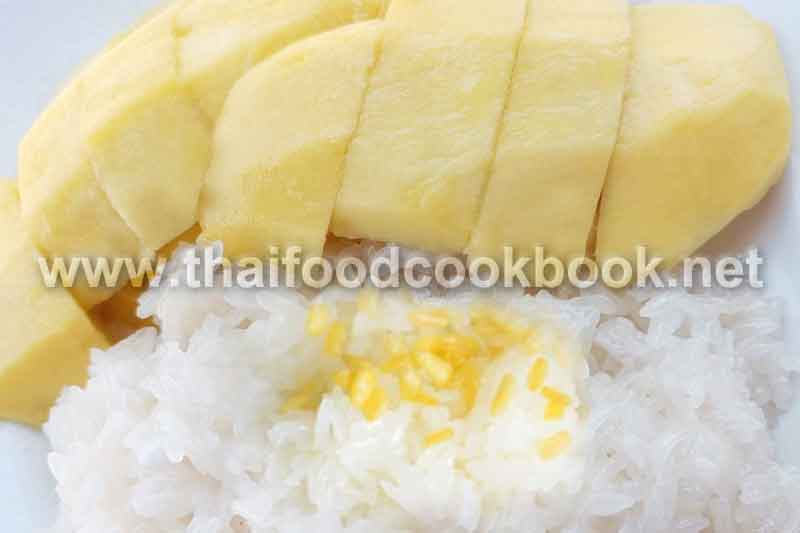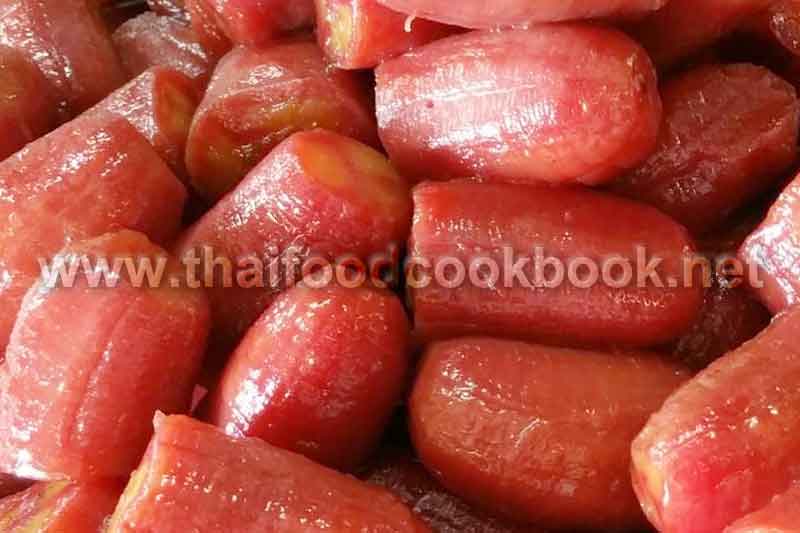Thai Red Rubies in Coconut Milk (Tub Tim Krob) – A Traditional Thai Dessert with Refreshing Sweetness
Thai Red Rubies in Coconut Milk (Tub Tim Krob) is more than just a famous Thai dessert; it is an iconic bowl of sweetness that symbolizes refreshment, hospitality, and the beauty of Thai culinary craft. Many people who try to recreate this dessert at home often struggle with two major challenges: getting the tapioca coating to form the right translucent texture and making the coconut milk rich without becoming too heavy or watery. These mistakes lead to disappointment and a lack of confidence in home-cooked Thai desserts. Luckily, with the right method, quality coconut milk, and proper handling of water chestnuts, anyone can make a restaurant-quality version at home. For those seeking more guidance or browsing additional Thai dessert inspirations, the main recipe portal of Thai dessert recipes offers more classic sweets using coconut milk, pandan, and palm sugar. This dish is also celebrated worldwide for its jewel-like appearance and its delightful mix of chewy, crunchy, and creamy sensations in every bite. When perfectly made, the rubies appear glossy and bouncy, floating in cold coconut milk with crushed ice, delivering the kind of refreshing taste that Thailand is truly known for.
Authentic Thai Red Rubies Recipe – Ingredients and Step-by-Step Preparation
To achieve the most delicious Tub Tim Krob, it is essential to prepare each element with care. The ingredients are simple, but it is the preparation technique that makes all the difference. Below are the core ingredients for a family-sized serving of this dessert, preserving the same traditional taste found in Thai street dessert stalls and royal Thai kitchens:
- 1 cup fresh water chestnuts, diced into small cubes
- 1/2 cup tapioca flour (plus extra for dusting)
- 1/2 cup red food coloring or natural beetroot juice
- 1 cup thick coconut milk
- 1/4 cup sugar (adjust depending on sweetness preference)
- 1/4 teaspoon salt to balance the coconut flavor
- 1–2 cups crushed ice or shaved ice
- Pandan leaves (optional, for enhanced aroma)
Step-by-Step Cooking Process:
- Soak the diced water chestnuts in red food coloring or beetroot juice for at least 15–20 minutes until they reach a vibrant ruby tone.
- Drain and coat the colored cubes with tapioca flour until fully covered. Shake off the excess flour before cooking.
- Boil water in a pot and gently drop the coated cubes into the pot. Stir lightly to prevent sticking. Once the rubies float to the top, continue cooking for another minute before removing.
- Transfer the cooked rubies to a bowl of ice water to firm up and achieve a chewy-crunchy texture.
- Prepare the coconut milk by simmering it lightly with sugar, salt, and pandan leaves until aromatic, then let it cool.
- Assemble by placing the chilled rubies in a bowl, topping with sweetened coconut milk, then finish with crushed ice.
How to Achieve the Perfect Texture and Flavor Balance When Making Tub Tim Krob
The magic of Thai Red Rubies in Coconut Milk comes from its unique texture play—soft, chewy, and crunchy cubes wrapped in tapioca sitting in silky coconut milk. Many people mistakenly use too much flour or overcook the rubies, causing the texture to become gummy instead of pleasantly bouncy. Another common mistake is overly thick coconut milk, which can overpower the dish and make it heavy.
Key tips for getting the texture right:
- Use fresh water chestnuts rather than canned if possible
- Rinse lightly before dusting with flour to help the coating stick
- Keep the ice bath ready before boiling the rubies
- Simmer coconut milk only gently to avoid splitting
- Serve immediately for best mouthfeel
Aside from texture, flavor balance is equally important. The coconut milk should have a mild saltiness that enhances sweetness naturally. This subtle saltiness is a hallmark of many traditional Thai desserts. If pandan leaves are available, they elevate the aroma, giving your dessert an authentic Thai touch.
Traditional Origins and Cultural Meaning of Tub Tim Krob
Thai Red Rubies in Coconut Milk is more than a delightful treat; it is deeply rooted in Thai heritage. In Thai culture, “tub tim” means ruby, symbolizing prosperity, purity, and beauty. Historically, this dessert was served during special feasts, temple celebrations, and royal banquets because its gem-like appearance was believed to bring good fortune and gratitude to guests. Today, this dessert has become a summer favorite in Thailand and is served year-round in restaurants and street dessert stalls.
Its popularity has even reached the global culinary community, and you can find more background history through trusted resources such as references to Thapthim krop that describe its cultural significance and international recognition. Nowadays, with the rise of Thai cuisine across the world, Tub Tim Krob is often featured in cooking shows, food festivals, and Thai tasting menus, making it one of the most identifiable Thai desserts internationally.
Serving Ideas and Flavor Variations for Home Dessert Lovers
While the traditional recipe uses beet-tinted water chestnuts, home cooks have created fun variations of this dessert for modern audiences. If you want to experiment, you can use natural coloring from butterfly pea flowers for blue rubies or pandan for green rubies, turning this into a multicolored jewel dessert for special occasions. For a refreshing twist, you can also add slivered jackfruit or toddy palm seeds for extra layers of texture.
Some popular alternative versions include:
- Pandan-infused Rubies (green)
- Tricolor rubies for festive occasions
- Low-sugar coconut milk for healthier desserts
- Pure coconut cream topping for extra richness
Whether served in a glass bowl or layered in a tall dessert cup, Tub Tim Krob always makes an elegant presentation. The mix of cold crushed ice and creamy coconut milk makes it an ideal Thai summer refreshment, especially for those who enjoy plant-based or dairy-free treats.
Why Homemade Tub Tim Krob Tastes Better Than Store-bought Versions
When preparing Thai Red Rubies in Coconut Milk at home, you maintain full control over sweetness, freshness, and texture—something that store-bought versions cannot always guarantee. Authentic homemade Tub Tim Krob uses fresh coconut milk, which gives a more natural aroma and mouthfeel. Meanwhile, commercially produced versions often rely on stabilizers or overly sweet syrups. By making it yourself, you can personalize it with organic coconut milk, low-glycemic sugar, or fresh pandan to create a healthier yet more dynamic dessert experience.
Health Benefits of Tub Tim Krob and Why It Is a Great Tropical Dessert
Although this dessert is indulgent, it comes with surprising nutritional benefits. Water chestnuts are naturally hydrating and contain fiber, which makes digestion more comfortable. Coconut milk includes healthy plant-based fats that help the body absorb nutrients. Served cold, Tub Tim Krob also helps reduce body heat, which is why it remains a beloved summer dessert across Thailand.
Summary: Thai Red Rubies in Coconut Milk (Tub Tim Krob) as a Refreshing Cultural Delight
Thai Red Rubies in Coconut Milk (Tub Tim Krob) blends cultural elegance with tropical refreshment in a single bowl. The water chestnut “rubies,” wrapped in tapioca, offer a delightfully chewy crunch while floating in lightly sweetened coconut milk over crushed ice. With the right preparation, home cooks can recreate this iconic dessert easily and beautifully. From its symbolic meaning of joy and good fortune to its naturally refreshing taste, it stands as one of the most treasured Thai dessert recipes worldwide.

